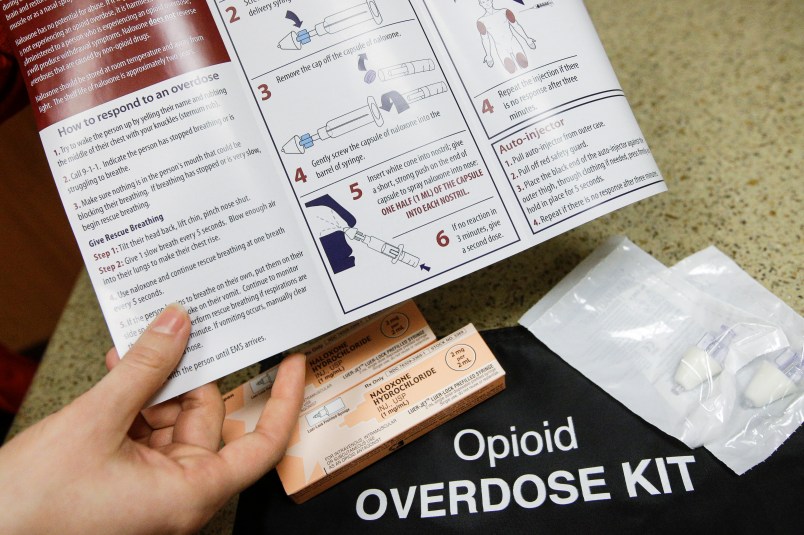COLUMBUS, Ohio (AP) — Accidental drug overdoses killed 3,050 people in Ohio last year, an average of eight per day, as deaths blamed on the powerful painkiller fentanyl again rose sharply and pushed the total overdose fatalities to a record high, the state reported Thursday.
Over one-third of those deaths — 1,155 — were fentanyl-related, which more than doubled from the previous year and increased from just 75 in 2012.
Authorities who had been targeting prescription painkiller abuse say the problem has changed quickly in recent years as users turned to heroin, fentanyl and even stronger drugs.
It’s an epidemic that can only be effectively addressed through cooperation and a combination of prevention, early intervention, up-to-date treatment, and life-saving measures such as the opioid overdose antidote naloxone, said Dr. Mark Hurst, the Department of Mental Health and Addiction Services’ medical director.
“This isn’t an issue that, as state departments and agencies, we’re going to be able to solve unilaterally,” Hurst said. “It requires communities, it requires families, it requires individuals, it requires schools. If we’re really going to make good progress and sustain progress on this, we need all hands on deck.”
Republican Gov. John Kasich was expected to discuss the drug problem and Ohio’s response Thursday at a judicial summit involving authorities from nine states.
Ohio has been one of the states hit hardest by the overdose epidemic. Fentanyl overdose deaths spiked so quickly last year that scientists with the Centers for Disease Control and Prevention visited the state to study the problem.
States release overdose data at various times, and Ohio’s overall rank nationally wasn’t yet available.
A record 47,055 people died from drug overdoses in the U.S. in 2014, according to the latest figures from the CDC. The number was up 7 percent from 2013, spurred by large increases in heroin and opioid painkiller deaths.
Officials concede the problem has grown in Ohio and elsewhere but expressed hope of making headway, citing progress in expanding access to life-saving naloxone and curbing prescription opiate abuse.
Ohio emergency medical personnel last year administered nearly 19,800 doses of naloxone, known by the brand name Narcan, the state said. Naloxone can be dispensed by pharmacists without a prescription under changes made in 2015, and more than 900 pharmacies around the state now offer that.
Meanwhile, guidance issued for prescribers helped reduce the number of opioid doses given to patients last year by 81 million compared with 2011, decreasing the leftover drugs that might be available for abuse, according to the state report.
State officials said their strategies to tackle the problem during the next year include working with lawmakers to stiffen penalties for illicit fentanyl sales and make it easier to establish opiate treatment programs.
They are also expanding a public awareness campaign and an addiction treatment program made available through drug courts.
Other plans will support local drug task forces and step up drug-seizure efforts. The state is also integrating an automated prescription reporting system into more electronic medical records and pharmacy dispensing systems to cut down on doctor shopping by addicts.
Many of those responses aren’t drug-specific, meaning they could still be useful however the problem evolves next, said Dr. Mary DiOrio, the state medical director.
“We’re really going to be agile enough that we can address things that come up,” she said.
___
Sewell reported from Cincinnati.
Copyright 2016 The Associated Press. All rights reserved. This material may not be published, broadcast, rewritten or redistributed.



